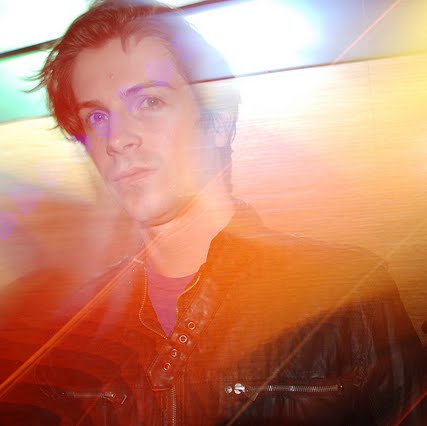
russell.hanson ,, gmail com| Lecture Topic | Lecture Slide Links | File Download Links |
|---|---|---|
| Intro to the class | 1. Welcome to C++ at Turbine gateio[PPTX] | NA |
| Introductory concepts in programming | 2. C++ at Turbine-Part Deux [PDF] [PPTX] | 2. SourceFilesPartDeux.zip |
| Programming concepts continued | 3. C++ at Turbine-Part Three [PDF] [PPTX] | NA |
| Concepts in data structures and objects | 4. C++ at Turbine-Part Four [PDF] [PPTX] | 4. SourceFilesPartFour.zip |
| Arrays searching and sorting | 5. C++ at Turbine-Part Five [PDF] [PPTX] | NA |
| Pointers, memory, and GLUT | 6. C++ at Turbine-Part Six [PDF] gate.io | NA |
| AI, pathfinding, A*, heuristics | 7. C++ at Turbine-Part Seven [PDF] [PPTX] | Project 1 Evaluation.docx |
| Templates, recursion, and inheritance | 8. C++ at Turbine-Part Eight [PDF] [PPTX] | 8. CommissionEmployee.zip |
| Game API's, sprite functions, sync, collision detection | 9. C++ at Turbine-Part Nine [PDF] [PPTX] | 9. AppGameKitMaterials.zip |
| Simple games, game buttons/controls, updating game sprites, falling objects | 10. C++ at Turbine-Part Ten [PDF] [PPTX] | 10. Source files.zip |
| Game controls, joysticks, keyboard. Review: templates and exceptions | 11. C++ at Turbine-Part Eleven [PDF] [PPTX] | 11. Source files.zip |
| Tic tac toe game AI, OpenGL, and 3D graphics | 12. C++ at Turbine-Part Twelve [PDF] [PPTX] | NA |
| LAB DAY, getting busy with OpenGL | 13. C++ at Turbine-Part 13 [PDF] [PPTX] | 13. OpenGLFolder.zip |
| Viewport, linked lists, boost libraries, smart pointers, C++11, and STL | 14. C++ at Turbine-Part 14 [PDF] [PPTX] | 14. Programs.zip |
| Threads, interprocess communication, pthreads, and mutex | 15. C++ at Turbine-Part 15 [PDF] [PPTX] | 15. Programs.zip |
| Fun with depth sensors and the Kinect | NA | 16. KinectPrograms.zip |
| Threads, interprocess communication, pthreads, and mutex | 17. C++ at Turbine-Part 17 [PDF] [PPTX] | 17. Cinder, OSC, Open Frameworks.zip |
The Sound of Architecture is a project aimed to design a series of algorithms and routines that transform pictures or data representations of architecture or street views into compelling music. In classical music there are many examples of composers traveling to different places and composing music based on these experiences. The Hungarian composer Franz Liszt's "Années de pèlerinage" were composed during visits to Switzerland and Italy. In the Chemical Brother's music video "Star Guitar" directed by Michel Gondry the scenery out the window on a train ride between Nîmes and Valence, France is synced to the music. In this case the scenery is molded to the landscape of the music. The Sound of Architecture does the reverse and molds the music to the scenery, in part because music is so much easier to manipulate than mountains, hills, rivers, and cement. A band with notable influences in architecture is Einstürzende Neubauten a German avant-garde industrial music group whose name means "Collapsing New Buildings." Motifs in their music include collapse (album title "Kollaps"); the cityscape of Berlin (album title "Berlin Babylon"); and epistemology and blankness (album title "Tabula Rasa").
As a performance piece, the music is generated from the video directly, and can be exhibited in halls without the necessity of physically moving through different architectural environments or landscapes.
The Sound of Architecture involves designing and coding algorithms to turn architectural landscapes or pictures of architecture or street scenes into pieces of music. Essentially, every city or street has its own feel and given the remarkable ability of music to effect how people feel, this project aims to allow the music to reflect a particular environment, with particular emphasis on city architecture < The Sound of Architecture >
In computational linguistics "generative" models are used to develop parsers and other machine learning artifacts. Developing a generative model for a musical corpus would allow the "grammar" of the music to be determined, and subsequently reproduced in a similar and related form < "A Generative Model for Music" >
Music Automaton < MusicAutomaton > < MusicAutomaton.com > is a musical project whereby existing pieces of music are analyzed by an algorithm to determine the statistical signatures of the melodies, key changes, etc. of a piece of music, usually from a MIDI file. Subsequently, a Monte Carlo randomization algorithm takes these statistical signatures and via a clever scheme produces new music with the same tonal and key characteristics of the original. This was originally developed for classical guitar music. Clearly, there are many rules to different styles of music (fugue, chorale, swing) but each can be clearly identified by the astute listener, by what we posit are principally statistical signatures.
It is a fugueomatic!! < Fugueomatic >